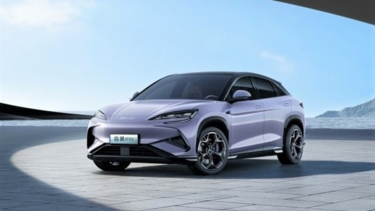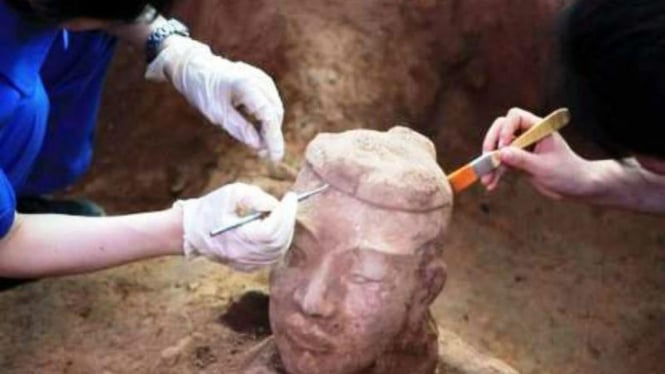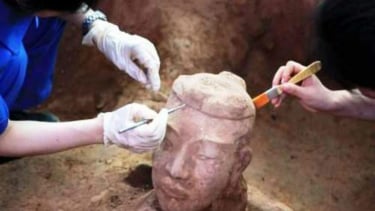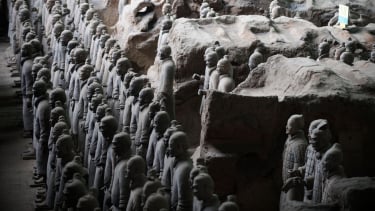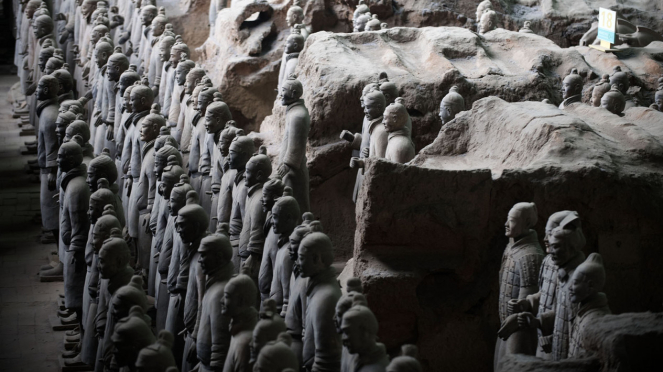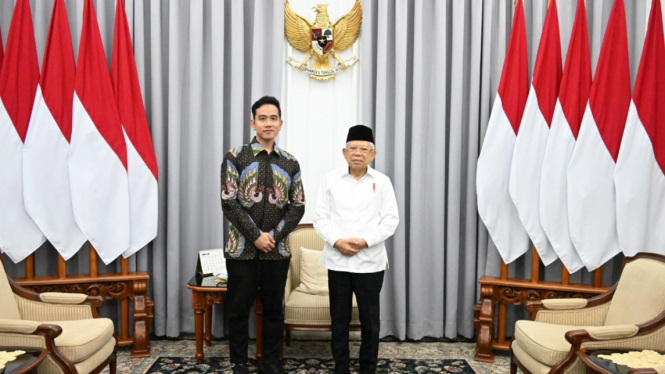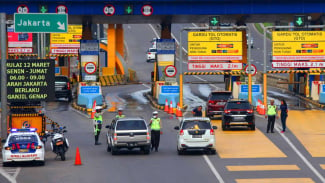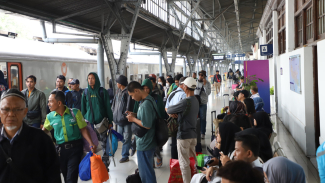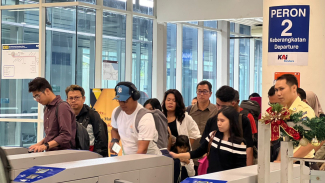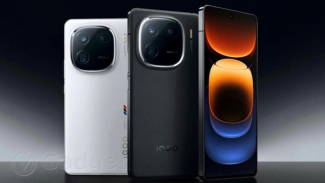Archaeologists Feel Afraid to Open Tomb of China’s First Emperor
- http://altileri.blogspot.com
VIVA – There is a deadly trap in the tomb of a Chinese emperor that has not been dismantled for more than 2,000 years. The tomb is known to be under a hill in central China. The ancient tomb has never been dismantled because the underground moat contains toxic mercury.
The tomb holds the secrets of China's first emperor, Qin Shi Huang who died on September 10, 210 BC after conquering six warring states to create China's first unified state.
“The big hill, where the emperor is buried, nobody’s been in there,’” said archaeologist, Kristin Romey.
In 1974, farmers stumbled across one of the most important archaeological discoveries of all time in an unassuming field in the Shaanxi province of China. While digging, they found fragments of a human figure made out of clay. This was just the tip of the iceberg.
Patung Prajurit Terakota
- ANTARA FOTO/Hermanus Prihatna
Archaeological excavations revealed the field was sitting above several pits that were jam-packed with thousands of life-size terracotta models of soldiers and war horses, not to mention acrobats, esteemed officials, and other animals.
It turns out this army statue was made to guard the tomb of Qin Shi Huang, the ruler of the Qin dynasty who ruled from 221 to 210 BC.
For almost four decades, archaeologists have been excavating the site. So far, they've uncovered about 2,000 clay soldiers, but experts estimate there are more than 8,000 in total, "They're going to be digging there for centuries," Romey predicted.
However, scientists have never touched the center of the tomb, which holds a palace containing the body of Qin Shi Huang.
"Partly out of respect for the emperor, but they also realize that no one in the world today has the technology to go in and dig properly."
Archaeologists fear that the damage could destroy the tomb and loss of important historical information. Currently, only archaeologically invasive techniques can be used to enter the tomb. Such techniques carry a high risk of causing irreparable damage.
The mercury trench is also another reason why archaeologists are reluctant to explore the tomb. It would most likely be very dangerous, based on soil samples around the tomb, which show very high levels of mercury hazard.
Ancient texts say the emperor created an entire kingdom and underground palace, complete with a ceiling that mimicked the night sky, with pearls as stars, and Qin Shi Huang's tomb is also surrounded by rivers of liquid mercury, which ancient Chinese believed could make them achieve immortality.
"This is rather ironic. It might have caused him to die from ingesting mercury. He took all the mercury pills because he wanted to live forever and the substance killed him at the age of 39." he explained.
